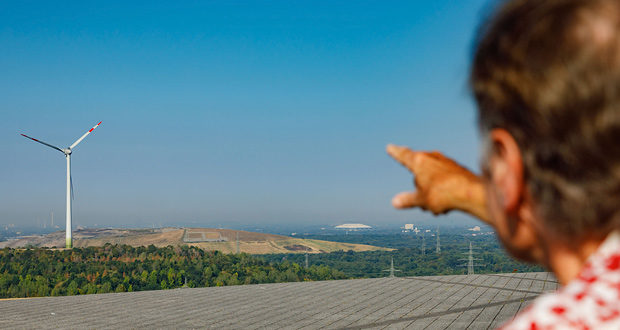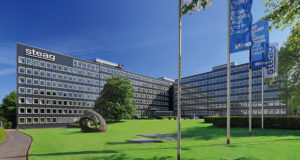How can a former mining area be transformed into a revitalised landscape? What needs to happen so that the areas can be used once again? To be able to produce comprehensive simulations of scenarios such as this in future, the new “TRIM4Post-Mining” project is now being launched with participation of the TH Georg Agricola University (THGA), Bochum/Germany (Figure 1). European experts from the fields of industry and research are working together to develop an integrated information modelling system that will allow virtual planning for the process of phasing out coal – from active mining, all the way up to repurposing the former mining areas. The aim here is also to contribute to valuable materials being recovered from old stockpile locations of the lignite and coal industry. In this endeavour, the scientists from the Research Institute for Post-Mining (FZN) at the THGA are collaborating closely with the TU Bergakademie Freiberg, the Delft University of Technology (TU Delft), as well as the companies Beak Consultants, MIBRAG, Special Industries and Eijkelkamp SonicsSampdrill. The project is part of the EU-financed Research Fund for Coal and Steel (RFCS).
Even virtual and augmented reality are to be used in order to optimise the repurposing of mining areas, as explained by Stefan Möllerherm from the FZN: “To this end, however, we first need to feed our planned database with lots of information, which we can then examine spatially and over time. Modern monitoring systems such as satellites, high-resolution images from drones or multi-sensors help us here.” The scientists are also keen to analyse the dynamic processes in spoil tips, as well as deformations or geochemical processes underground. “This will ultimately lead to an interactive TRIM, a “Transition Information Modelling System”, which will enable us to produce detailed predictions and then use these to derive a system of risk management,” hopes Möllerherm.
Not only the technical effects of post-mining can be simulated in this way. Indeed, it is hoped that the planning system will later be able to check both the social and ecological feasibility individually. This will then also make it possible to identify areas requiring special redevelopment or long-term monitoring. “There are many rules and requirements to be observed, above all when the former areas are to be used for agricultural purposes, for local recreation or for other industrial applications,” comments Möllerherm. The objective of the post-mining experts with the “TRIM4Post-Mining” project is to massively simplify the comprehensive planning and testing processes required. (THGA/Si.)

